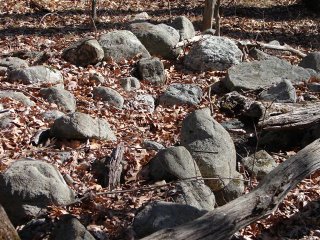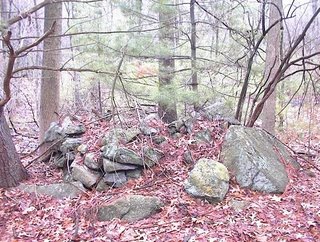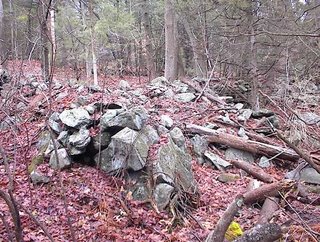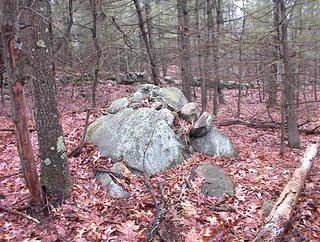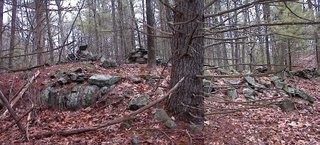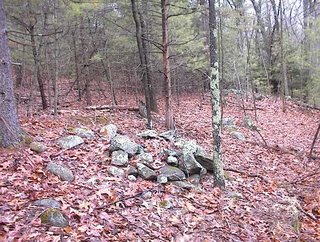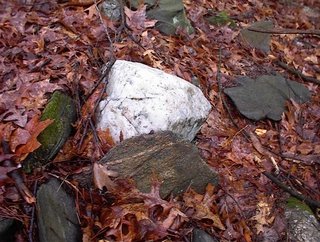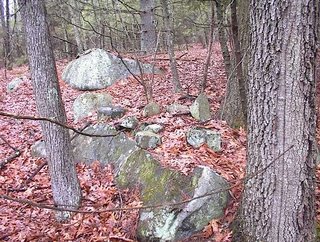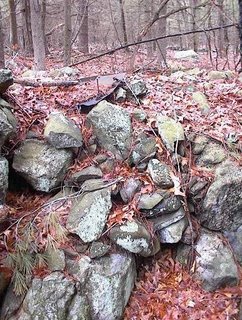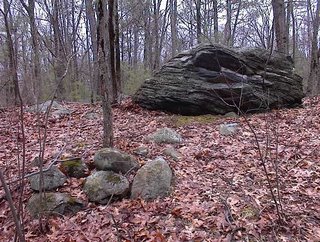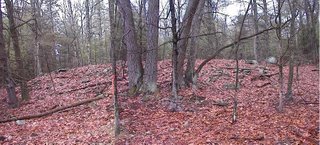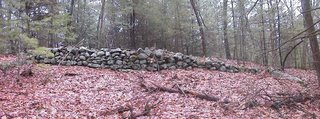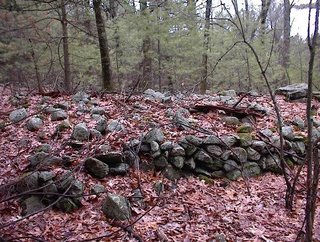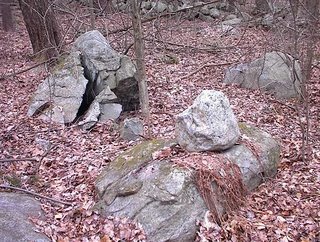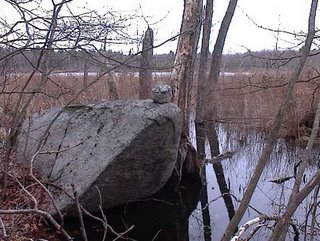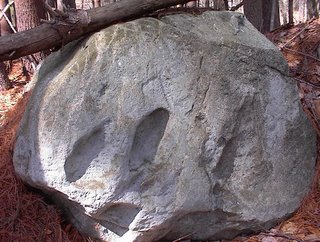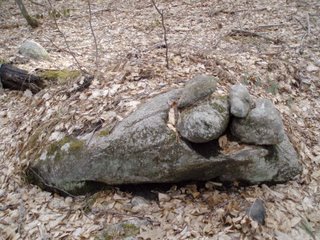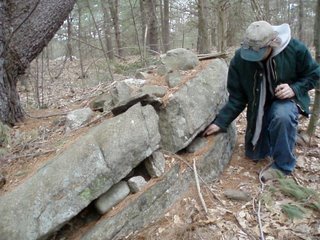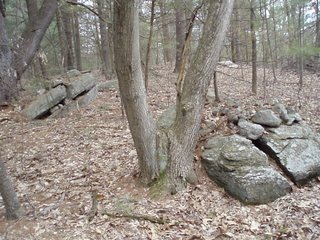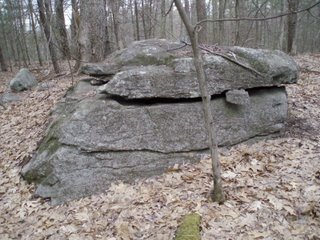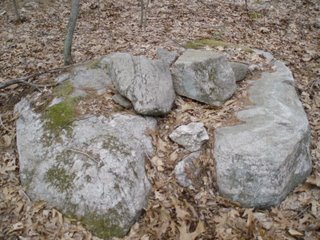...Yesterday when I saw the pile with that big flat stone and a hole underneath I thought of your site. I could picture the rest of those stones on top but I'm not really sure. Anyway, I was just curious as to what you thought. These are in Morris County, N.J.
 Bob had sent this email to a friend:
Bob had sent this email to a friend:This is that site you sent. If you scroll all the way down and see the cairns they have. When I saw the bottom stone this morning that's the first thing I thought of. The first two pictures are of one right in the beginning of the hike today. I wasn't in the woods 2 minutes and I saw this. There are so many slag piles in the area I assumed this was one but something doesn't look right, they are not slag type stones that are broken up. What do you think, I'm sure a lot of the stones are missing but it looks good? The other pictures are of the ones that got this rock pile thing started. I passed it today and there is another one about 10' away so there are pictures of both. It looks like they caved in, like they were high and fell. Maybe to much imagination. I went on a real long hike today, took 107 photos and the thing is only supposed to hold 90 plus the camera holds some. It was 5.5 hrs long and real hard and hot and buggy but it was well worth the trip.
